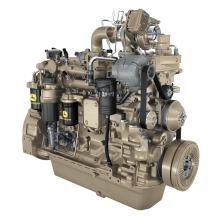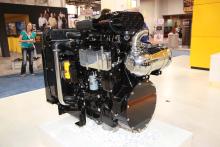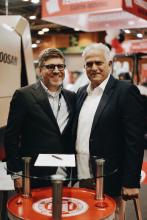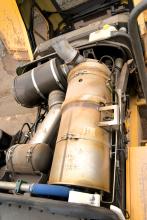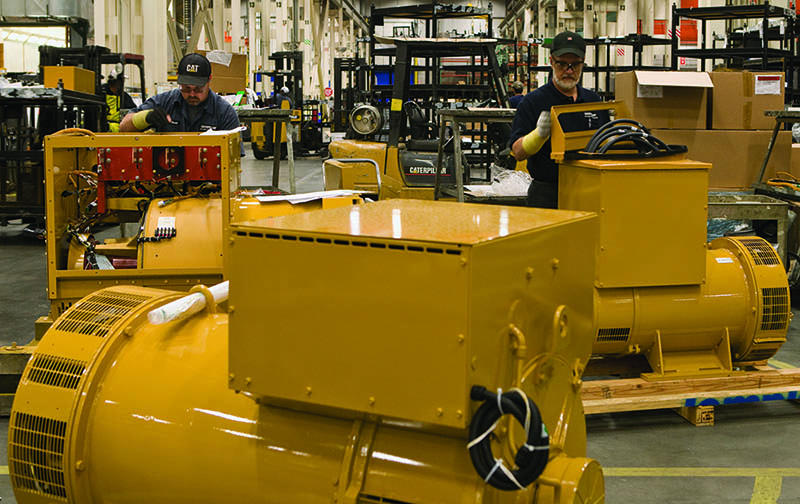
European legislatures began implementing emissions regulations for non-road mobile machinery in late 1997. These regulations apply to prime or standby power used in mobile applications such as drill rigs, wheeled loaders, bulldozers, highway excavators, forklift trucks, aerial lifts, mobile cranes and other non-road equipment including mobile generator sets.
Over time, the regulations have become progressively stricter to reduce further harmful engine exhaust substances, including carbon monoxide, hydrocarbons, particulate matter (PM) and nitrogen oxides. The standards have advanced from the initial Stage I to today’s Stage V, which is also known as EU Regulation 2016/1628.
As the mobile generator set market transitions from EU Stage IIIa to EU Stage V, customers will be challenged to adjust to the new product complexity and increased cost. The additional hardware needed to meet the updated Stage V requirements presents new challenges to the power rental market in Europe. Since the legislation for mobile generator sets skipped Stage IIIb and IV, a big jump in technology is required, including both engine modifications as well as off-engine aftertreatment.
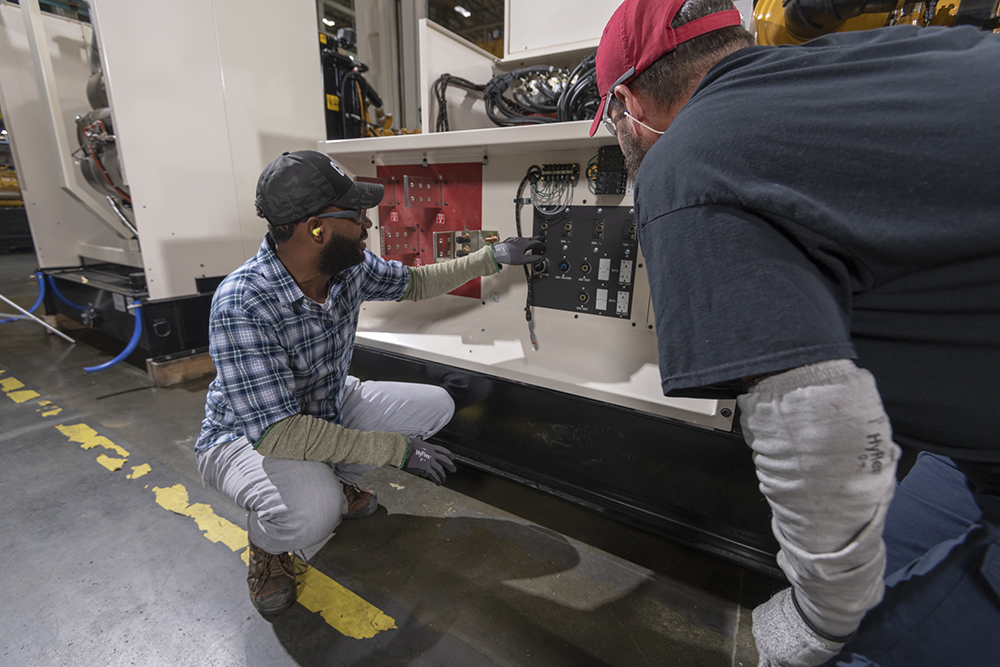
For example, a diesel oxidisation catalyst (DOC) and diesel particulate filter (DPF) are required for all high-pressure fuel system units over 19kW, while selective catalytic reduction (SCR) will be required for all units above 56kW. SCR requires diesel emission fluid (DEF)/Ad-Blue to convert oxides of nitrogen (NOx) to harmless compounds. While AdBlue is a common fluid in automotive and machine applications, it is an additional item to consider for a power rental operator who may be operating in a remote location.
EU Stage V also extends the scope to a broader range of engine types and sizes, regulating engine outputs higher than 560kW for the first time. This presents engine availability challenges for the large mobile power generation market. In addition to technical issues, commercial challenges exist as rental operators must work to increase rental rates to offset the significant increase in product acquisition costs, and maintain acceptable financial returns. As a result, in the years to come, rental rates will need to increase if rental companies are to maintain their return on investment.
The changes occurring because of EU Stage V, along with newly proposed particle number (PN) limits, effectively require the use of DPF to reduce emissions to compliance levels for engines within the scope of EU Stage V.
“The need for this additional hardware, combined with a significantly greater level of complexity in the engine design, requires a fully integrated solution tested for optimal performance and usability,” said Gareth Osborne, Caterpillar product definition manager for mobile generator sets. “Caterpillar is well-versed in the evolving European emission standards, and we have guided our mobile generator set customers through every phase of these regulations.”
At very high pressures, electric common-rail applications deliver fuel to electronically controlled fuel injectors. This process produces a very fine diesel spray resulting in minuscule soot particulates which pose potential health risks. While this type of system enables complete control over the combustion process and allows for thermal management of aftertreatment systems, the particulates must be managed to meet emissions regulations. A DPF filtration system is designed to reduce PM, including soot from the exhaust of a diesel engine. A series of alternately blocked channels forces the exhaust gas to flow through the channel walls, where the particulates are captured in the filter.
Many rental generator applications have low load factors or utilise oversized equipment because of limited information on the customer’s load profile, or large starting loads with relatively small running loads. During a low load operation, a DPF will accumulate PM due to low exhaust temperatures if the soot deposit rate is greater than the passive regeneration rate from the hot exhaust gas. The result is increased back pressure on the engine. As back pressure increases, eventually, the particulates must be removed from the DPF through a process known as regeneration.

By handling the regeneration processes internally with intelligent measurement of DPF soot level and on-package thermal management, Caterpillar’s high-speed system works without any interaction from the operator. This allows all rental generator sets fitted with DPF systems to have the flexibility to be used in any application and any environment.
“Caterpillar generator sets achieve this process transparently to the operator, without the need to take the generator set offline or add load banks and other equipment that increases complexity, cost and weight,” said Osborne. “Through our unique position as both the engine supplier and generator set packager, we can ensure all EU Stage V packages our customers receive are fully integrated and tested for optimal performance and usability.”
To ease that change, however, Caterpillar is following the regulation’s built-in transition structure. This allows companies like Caterpillar to continue to manufacture equipment using the previous emission tier for 18 months after Stage V becomes effective. There is also a six-month allowance for generators to be sold after the 18th month of manufacture. Stage V became effective 1 January 2019 for all engines below 56kW and above 130kW.
For engines in the 56kW to 130kW range, the effective date is 1 January 2020. By increasing their EU Stage IIIA fleet before the legislation takes effect, fleets can maintain lower rental rates for their customers and reduce overheads. In contrast, early adopters of EU Stage V-compliant machines will benefit from a rental business in highly regulated spaces such as large cities. Whichever avenue a fleet chooses, Caterpillar says it can help navigate a strategy to reduce cost and complexities.
Cat Connect technology is available to remotely track and manage generator sets, integrating telematics information into business systems and improving operational efficiency. This technology collects data and reports on asset performance, run hours, fuel consumption, maintenance needs and other statistics. Timely information allows customers to control costs better, improve performance and reduce risks.
Cat Connect technology can be used on generator sets and machines built by Caterpillar as well as equipment that is connected to the generator set, such as external fuel tanks for extended running, transformers or temperature control equipment.
Rental customers have access to remote-monitoring information that ensures generator sets are being utilised correctly and are ready to run when needed. Telematics can send real-time information on fuel level, DEF/(Ad-Blue) level, battery voltage and status (Run/Stop/Auto). This information can be actioned quickly, before the generator set is called to start, ensuring no issues occur when power is needed. Connected assets are said to ensure peak operation of any emission tier of a generator set but are deemed especially valuable with EU Stage V product.
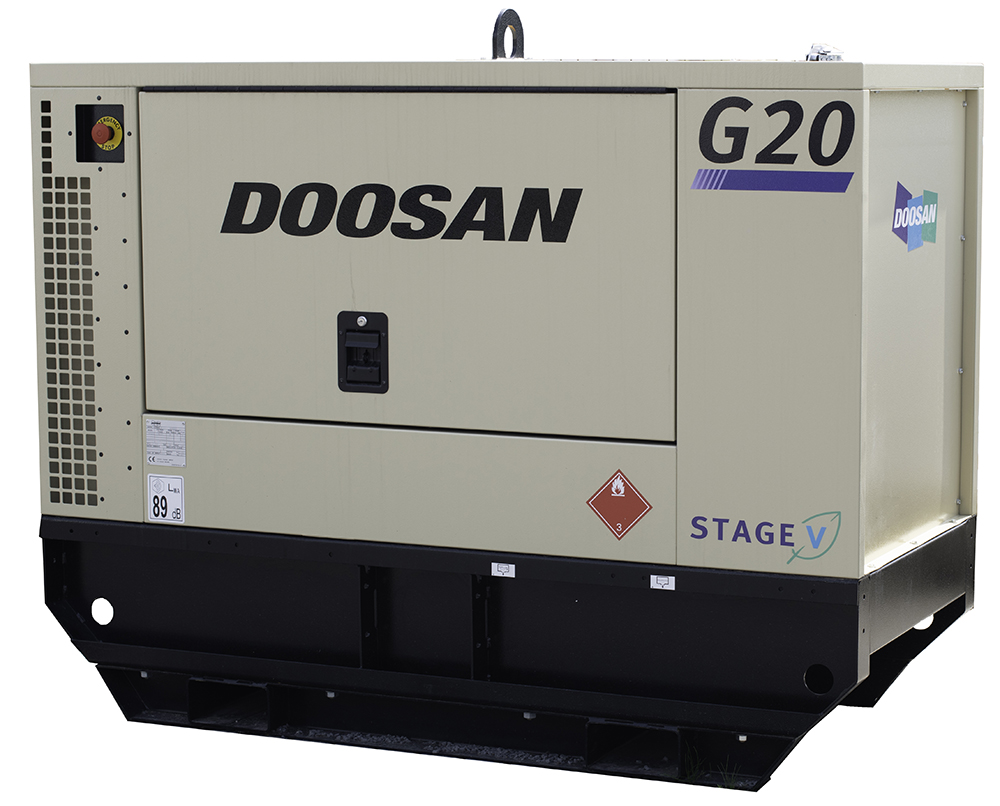
Speaking to Aggregates Business magazines, Jan Moravec, director of Product Management & Engineering for Doosan Portable Power EMEA (Europe, Middle East, Africa), spoke of where he saw growth opportunities in the global portable power market for quarrying customers. “Despite the existing, and we hope short-term, [COVID-19] slowdown of the global economy, and shocks to the oil market, our customers in this segment still have to satisfy continuously increasing demand to support construction projects and higher consumption of minerals needed for new technologies such as battery power. So, we see positive opportunities and growth in this segment as the power provided by our products is required to produce these materials. Though our machines are rather more ‘back-stage’ units than ‘frontliners’ - compressed air and generator power are still key. And the trend of several quarry and mining equipment OEMs (original equipment manufacturers) to move towards electrification for quarry and mining sites will further increase the demand for reliable sources of electric power.”
Commenting on Doosan Portable Power business priorities for 2020 and the first half of 2021, Moravec said: “We have two main strategic streams – the first is the Stage V transition for the EU market. We are using this as an opportunity to offer a completely new range of products with proven reliability and durability to serve any tough applications, with a focus on easy operation, serviceability and environmental protection. The second priority is to continuously increase our strong position in emerging markets, utilising the strength of our brand and the global organisation capability we have.”
“All our new products have sealed bunded frames to protect the environment from fluid leaks together with centralised, easily accessible fluid drains which together with easily accessible filters significantly reduce maintenance time and make it an easier task.
“Another of our features is ECOmizer, an automatic intelligent system, reducing fuel consumption by up to 70% during non-productive periods in applications.”
Moravec highlighted how in 2019 Doosan Portable Power introduced several new Stage V products including the company’s smallest 7/20 compressor, new medium- and large-size compressor platforms, the G20 generator and the LS9V lighting tower. He continued: “In the near future we plan to complete our Stage V compressor range, the first being the new 7/125-10/115 medium-size compressor platform which will be followed by a completely redesigned small compressor range. We are also working on new Stage V generators and new products for emerging markets.”
Asked by Aggregates Business how he saw the provision of portable power/power generation solutions for quarrying customers evolving over the next five to 10 years, Moravec replied: “The business will grow as the development of infrastructure and new technology grows. The power sources need to complete work will still be required, especially the availability of electrical power when it is needed.
“As emissions will continue to be a very important topic, I believe there will be continued alignment between emission regulations in the different markets we deal with. This will drive more new technologies and new product development as the markets continue to grow, with the focus on lower emissions, new energy sources and digitalisation.”

